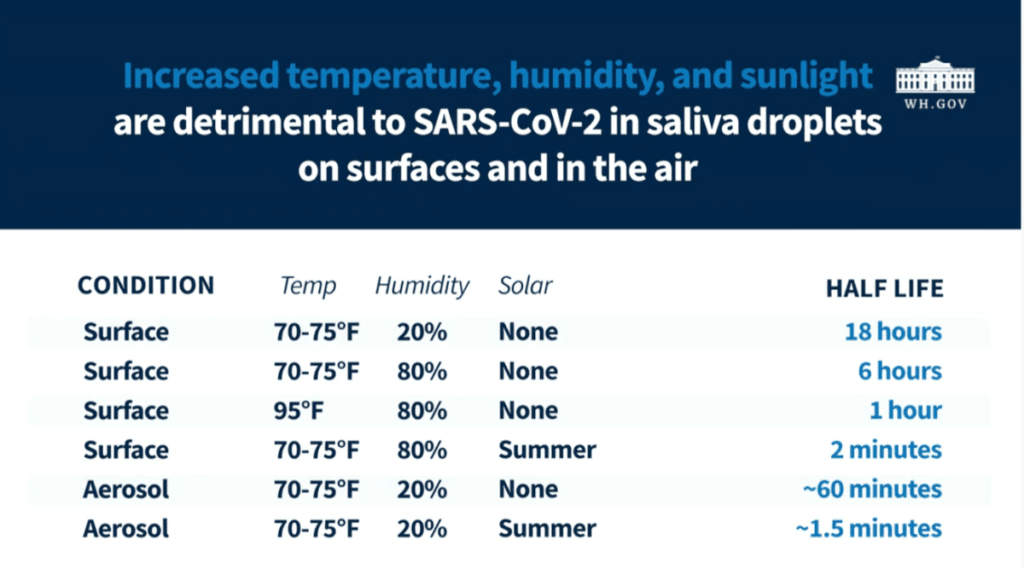Stanford Doctors Calls for Ending Full-Blown LockdownsDate: April 25, 2020Author: Nwo Report
 Source: Jose Nino
Source: Jose NinoA doctor from Stanford University’s Hoover Institution is calling for the end of the current lockdown procedures taking place across America in response to the Wuhan virus outbreak.
Scott W. Atlas, is the David and Joan Traitel Senior Fellow at Stanford University’s Hoover Institution and the former chief of neuroradiology at Stanford University Medical Center, believes that “Leaders must examine accumulated data to see what has actually happened, rather than keep emphasizing hypothetical projections; combine that empirical evidence with fundamental principles of biology established for decades; and then thoughtfully restore the country to function.”
Atlas highlighted five key facts that “are being ignored by those calling for continuing the near-total lockdown.”
Fact 1: The overwhelming majority of people do not have any significant risk of dying from COVID-19.
According to a recent Stanford University antibody study, the fatality rate of the infected is likely 0.1 to 0.2 percent. These numbers are far lower than past World Health Organization estimates that were 20 to 30 times higher and that spurred draconian lockdowns.
Atlas highlighted the case of New York City:
In New York City, an epicenter of the pandemic with more than one-third of all U.S. deaths, the rate of death for people 18 to 45 years old is 0.01 percent, or 11 per 100,000 in the population. On the other hand, people aged 75 and over have a death rate 80 times that. For people under 18 years old, the rate of death is zero per 100,000.
Of all fatal cases in New York state, two-thirds were in patients over 70 years of age; more than 95 percent were over 50 years of age; and about 90 percent of all fatal cases had an underlying illness. Of 6,570 confirmed COVID-19 deaths fully investigated for underlying conditions to date, 6,520, or 99.2 percent, had an underlying illness. If you do not already have an underlying chronic condition, your chances of dying are small, regardless of age. And young adults and children in normal health have almost no risk of any serious illness from COVID-19.
Fact 2: Protecting older, at-risk people eliminates hospital overcrowding.
According to hospital utilization data from New York City, individuals under the age of 18 were hospitalized at a rate of 0.01 percent per 100,000 people. For those aged between 18 to 44 years old, hospitalization stands at 0.1 percent per 100,000.
For the age cohort of 65 to 74, only 1.7 percent were subject to hospitalization.
Atlas expanded on these numbers:
Of 4,103 confirmed COVID-19 patients with symptoms bad enough to seek medical care, Dr. Leora Horwitz of NYU Medical Center concluded ‘age is far and away the strongest risk factor for hospitalization.’ Even early WHO reports noted that 80 percent of all cases were mild, and more recent studies show a far more widespread rate of infection and lower rate of serious illness. Half of all people testing positive for infection have no symptoms at all. The vast majority of younger, otherwise healthy people do not need significant medical care if they catch this infection.
Fact 3: Vital population immunity is prevented by total isolation policies, prolonging the problem.
“Atlas noted that
“infection itself allows people to generate an immune response — antibodies — so that the infection is controlled throughout the population by ‘herd immunity.’”
Atlas highlighted that medical care is not necessary for a large portion of the population who have caught the virus:
In this virus, we know that medical care is not even necessary for the vast majority of people who are infected. It is so mild that half of infected people are asymptomatic, shown in early data from the Diamond Princess ship, and then in Iceland and Italy. That has been falsely portrayed as a problem requiring mass isolation.
The doctor continued explaining how immunity ends up developing:
In fact, infected people without severe illness are the immediately available vehicle for establishing widespread immunity. By transmitting the virus to others in the low-risk group who then generate antibodies, they block the network of pathways toward the most vulnerable people, ultimately ending the threat. Extending whole-population isolation would directly prevent that widespread immunity from developing.
Fact 4: People are dying because other medical care is not getting done due to hypothetical projections.
Critical health care for millions of Americans is largely being ignored and people are dying because of “potential” Wuhan virus patients and for fear of transmitting the disease. During this outbreak, a number of states and hospitals stopped “nonessential” procedures and surgery.
Atlas noted that the overemphasis of Wuhan virus cases has “prevented diagnoses of life-threatening diseases, like cancer screening, biopsies of tumors now undiscovered and potentially deadly brain aneurysms.”
He continued:
Treatments, including emergency care, for the most serious illnesses were also missed. Cancer patients deferred chemotherapy. An estimated 80 percent of brain surgery cases were skipped. Acute stroke and heart attack patients missed their only chances for treatment, some dying and many now facing permanent disability.
Fact 5: We have a clearly defined population at risk who can be protected with targeted measures.
Atlas stressed that the “overwhelming evidence all over the world consistently shows that a clearly defined group — older people and others with underlying conditions — is more likely to have a serious illness requiring hospitalization and more likely to die from COVID-19.” With those facts in mind, he called for an isolation policy that targets that group, which includes “strictly monitoring those who interact with them.”
The Hoover Institute fellow concluded:
Strictly protect the known vulnerable, self-isolate the mildly sick and open most workplaces and small businesses with some prudent large-group precautions. This would allow the essential socializing to generate immunity among those with minimal risk of serious consequence, while saving lives, preventing overcrowding of hospitals and limiting the enormous harms compounded by continued total isolation. Let’s stop underemphasizing empirical evidence while instead doubling down on hypothetical models. Facts matter.
All things considered, Atlas may be on to something.
The Wuhan virus is not as grave as many people believe, so the response must be calibrated in a manner that protects public health while gradually re-opening the economy.
https://nworeport.me/2020/04/25/stanford-doctors-calls-for-ending-full-blown-lockdowns/
Thanks to: https://nworeport.me

 By Chris Menahan
By Chris Menahan





 Sat Mar 23, 2024 11:33 pm by globalturbo
Sat Mar 23, 2024 11:33 pm by globalturbo






